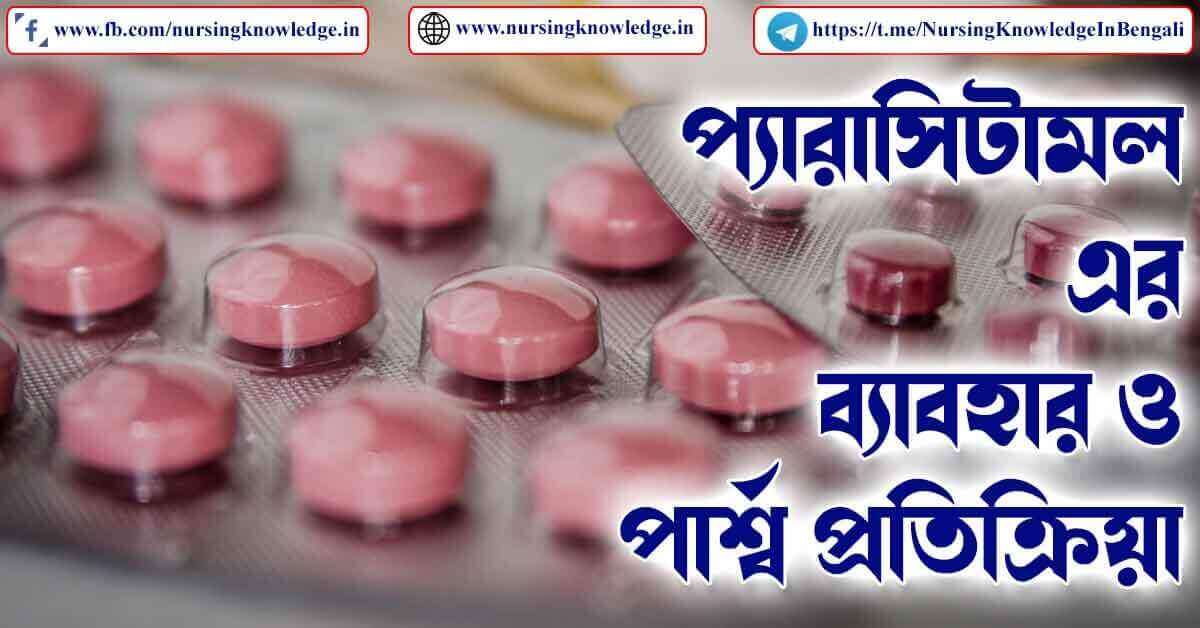Paracetamol is a joint pain and fever reliever known as acetaminophen (Tylenol). Paracetamol is a drug name assigned using the International Nonproprietary Name (INN) generic name system. It is the name of the Medicine used in places like Europe, Australia, New Zealand, and India. Acetaminophen is a generic name that is assigned using the United States Accepted Nomenclature (USAN). Acetaminophen is used in countries like the United States, Canada, and Japan. The INN and USAN, generic names of generic drugs, are the same, and there is no difference between countries. It is classified as an analgesic and antipyretic and is widely used to relieve mild to moderate pain, such as headache, dental, menstrual, muscle pain, and arthritis pain, as well as to reduce fever.
Read More: Lung cancer best treatment
What is Paracetamol?
Paracetamol works by blocking the chemical messengers in the brain. That tells us when we’re in pain and by affecting the chemical couriers that regulate our body temperature. It’s blocking the product of prostaglandins, which are chemicals responsible for inflammation, pain, and fever. Paracetamol can help reduce pain and fever by reducing the quantum of prostaglandins.

Paracetamol is available in colorful forms, including tablets, capsules, liquids, and suppositories. It’s generally safe when taken as directed. Still, it can spawn side goods similar to nausea, puking, and liver damage if taken in excessive quantities or combined with alcohol or certain specifics.
Paracetamol was first developed in 1878 but used more extensively in the 1950s. Presently, Paracetamol is one of the most extensively used anodynes in the world, and general performances of this Medicine are available.
Paracetamol Doses:
The recommended paracetamol doses depend on numerous factors, including age, weight, and the treated condition. Following the recommended tablets on the marker or as your healthcare professional advises is essential. The maximum recommended daily cure of Paracetamol for grown-ups is 4 grams (4000 mg), while for children, it depends on their weight and age.
Here are some general guidelines for paracetamol dosages:
For adults and children over 13 years of age:
- The recommended cure for mild to moderate pain is 325- 650 mg every 4- 6 hours, up to a maximum of 4 grams daily.
- The recommended cure for reducing fever is 325- 650 mg every 4- 6 days. Per hour, up to a maximum of 4 grams per day.
For children, Teenagers, or under 13 years of age:
- For children 2-3 years of age, the recommended dose is 160 mg every 4-6 hours, up to a maximum of 640 mg daily.
- For children 4-5 years of age, the recommended dose is 240 mg every 4-6 hours, up to a maximum of 960 mg daily.
- For children 6-8 years of age, the recommended dose is 320 mg every 4-6 hours, up to a maximum of 1280 mg daily.
- For children 9-10 years of age, the recommended dose is 400 mg every 4-6 hours, up to a maximum of 1600 mg daily.
- For children 11 years of age and above, the recommended dose is the same as for adults (325-650 mg every 4-6 hours, up to a maximum of 4 grams per day)
It’s important to note that the recommended doses of Paracetamol can vary depending on the formulation and concentration of the Medicine. So it’s always best to follow the instructions on the label of the Packet or the advice of a healthcare professional.
Paracetamol Uses:
Paracetamol, or acetaminophen, is a medication used to relieve mild-to-moderate pain and reduce fever. Here are some of the common uses of Paracetamol:
Pain relief:
Paracetamol is commonly used to relieve pain caused by headaches, toothaches, menstrual cramps, muscle aches, backaches, and arthritis.
Fever reduction:
Paracetamol can help reduce fever caused by illnesses such as the flu, the common cold, and other infections.
Post-surgical pain relief:
This Medicine may be used after surgery to help manage pain.
Pain relief in children:
It is safe and effective for children and commonly relieves pain associated with teething, ear infections, and other common childhood illnesses.
Pain relief during pregnancy:
It is generally considered safe during pregnancy for pain relief and reducing fever.
Pain relief in patients with liver disease:
This Medicine is preferred over other pain relievers, such as aspirin or ibuprofen, for patients with liver disease or those at risk of liver damage, as it is metabolized in the liver to a lesser extent.
Read More: Cause of Haemophilia
Paracetamol is available over the counter in various forms, including tablets, capsules, liquids, and suppositories. However, consulting with a healthcare professional before taking any medication is always recommended, especially if you have any underlying health conditions or are taking other medications.

Side effects of Paracetamol:
When taken as directed, Paracetamol is generally safe and well-tolerated by most people. However, like any medication, it can cause side effects, especially when taken in large doses or for prolonged periods. Here are some common side effects of Paracetamol:
Nausea and vomiting:
These are Paracetamol’s most common side effects, usually occurring in higher doses.
Allergic reactions:
Some people may experience an allergic reaction to Paracetamol, which can cause symptoms such as skin rash, hives, and swelling of the face, lips, tongue, or throat.
Liver damage:
Taking high doses of Paracetamol over a long period can lead to liver damage, which can be life-threatening.
Kidney damage:
Long-term use of Paracetamol can also cause kidney damage.
Blood disorders:
In rare cases, Paracetamol can cause blood disorders such as thrombocytopenia and leukopenia.
Skin reactions:
Paracetamol can cause skin reactions such as itching, redness, and blistering.
Stomach ulcers:
Paracetamol can irritate the lining of the stomach and cause ulcers.
It is essential to follow the recommended dosage instructions and to speak with a healthcare professional before taking Paracetamol, especially if you have a history of liver disease or alcoholism or are taking other medications. If you experience any side effects while taking Paracetamol, you should stop and seek medical attention immediately.
Conclusion:
It is essential to follow the recommended dosage instructions and to speak with a healthcare professional before taking Paracetamol, especially if you have a history of liver disease or alcoholism or are taking other medications.
Source: Google, Wikipedia, and WHO
==========
Thanks for reading this article. If you have any information related to this article and blog, you can comment or visit the contact us page.
You can also visit the Competitive Exams-related Blog: Learn For Exam
and Popular quotation related Blog: A to Z Quotes
==========

